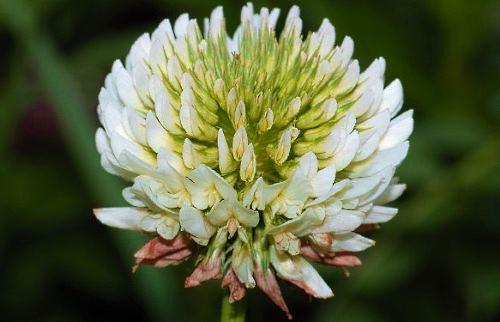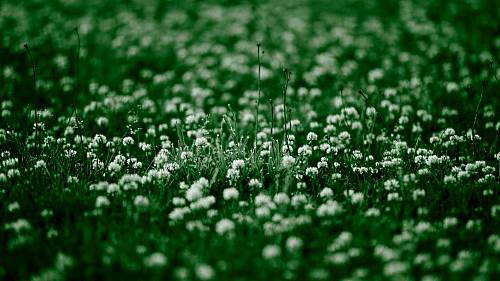What are the pros and cons of a clover lawn?

Clover is one of the most decorative plants for creating picturesque meadows. It perfectly enlivens the general background, makes the lawn voluminous and lively. For the lawn in the country, in a private house or when arranging walking areas, white clover is most often used. If you ask yourself what are the pros and cons of a clover lawn can influence the choice, then the answer will be different for everyone.
The undoubted advantages of a clover lawn make those who are important to make a choice in its favor:
- Dense lawn structure, without bald spots and weeds. Clover will drown out most annual weeds thanks to its dense soil cover. In addition to a strong root system, it throws its "antennae" around the main sprout - this makes it possible to fill the entire soil surface and cover it with small and dense foliage in the form of a trefoil.
- Excellent decorative qualities. Unlike lawn grasses, clover leaves are round, depending on the abundance of sunlight, they change the gamut from gentle emerald to deep green - this creates visual volume and splendor. In addition, small and fragrant flowers, during almost the entire summer, make the meadow worthy of the eyes of the most demanding connoisseur of beauty. If there is such a lawn in the country, most housewives arrange summer tables for tea drinking on it.
- Low-growing varieties, especially white clover, do not need to be cut frequently. You will need a lawn mower or trimmer no more than three times in an entire season. The plant spreads on the ground, and only flowers on a very short stem rise to the top. After trimming, the clover recovers within three to five days. Most often, such a lawn is not cut at all.
- High resistance to trampling. Even on paths that are used as the main ones, in places where children and animals play, in case of technical damage to the lawn - it is restored within a couple of days. This is convenient if the car has to be parked on the lawn.
- Ideal for using clover on slopes or designer artificial terrain. Thanks to the strongest root system and the ability to crawl in all directions, the clover keeps on almost vertical steep slopes, the main thing is sunlight and watering.
- The special bacteria that live on its roots have the property of filling the soil with nitrogen. If you have a mixed lawn, this has a beneficial effect on other grasses, and solves the issue with artificial lawn fertilization.
- Can be combined with other herbs to fill bald spots. Clover germinates quickly enough, and within a couple of weeks it covers the trampled paths or places where children play. Not significant consumption - 1.5 - 2 kg per hundred square meters and simplicity of sowing solves the issue of "repair" of the existing lawn in the shortest possible time.
- Safety for children and animals. The youngest children always do not mind trying to taste everything that surrounds them. Clover does not need fertilization and is always clean. This allows you not to worry about poisoning. Children's lawns are most often made from clover, with this in mind.

The disadvantages of a clover lawn are not great, but still there.In some cases, a mixed lawn is preferred because of things such as:
- Clover lawns are more slippery than other grasses. The dense cover and voluminous leaves keep moisture in the soil for a long time - this allows the clover to be constantly slightly damp. If the lawn is planned for a place of active recreation, it is worth mixing it with other grasses, or using it for another zone on the site.
- Active growth. This point can be attributed to both positive and negative aspects. If you plan to grow vegetables or plant flower beds next to the lawn, clover will gladly choose these territories. It is easy to weed, but it is better if you immediately determine the boundaries for it and stop the stems creeping towards the beds.
- Not a neat appearance in faded inflorescences. After flowering, the clover flower turns brown - it turns into a seed plant. This somewhat spoils the view, but the plant is almost constantly in bloom, and if these small nuances are important to you, you should choose a lawn from non-flowering grasses. But the fact that the plant sows seeds by itself, unlike grasses that are constantly sheared, is rather a plus.